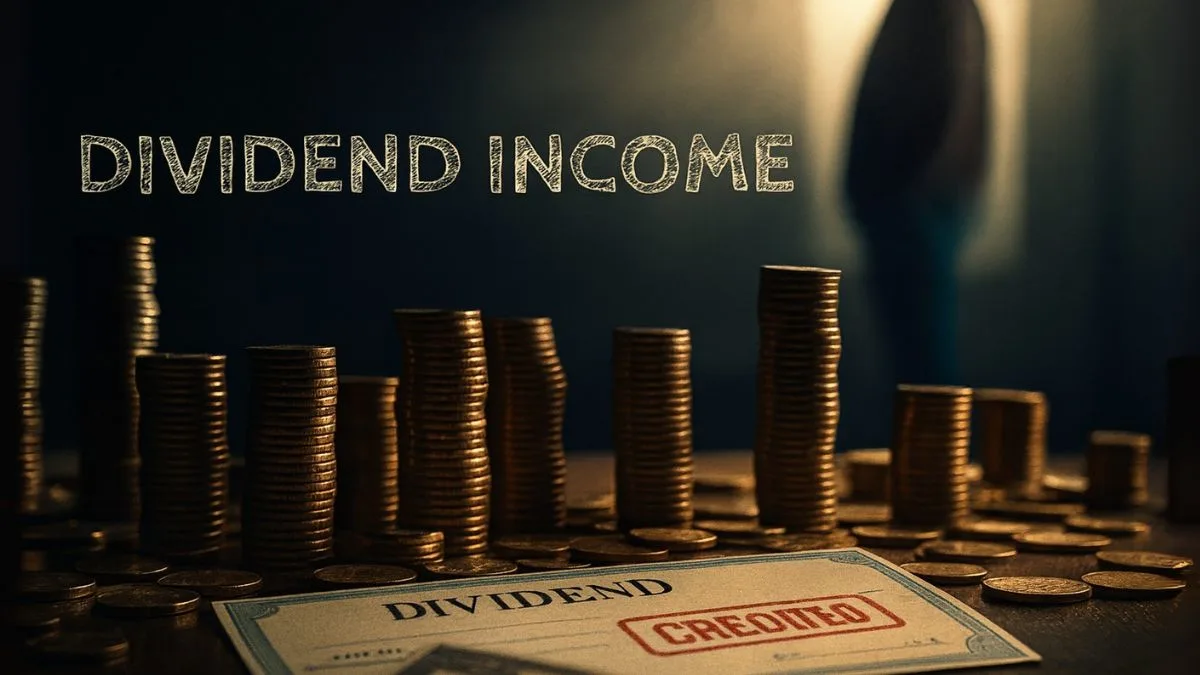
Investing in stocks doesn’t just mean waiting for prices to rise. Many investors enjoy a steady stream of income through dividend income. Put simply, it is the money paid to you by the company for holding the shares. For long-term investors, dividends act as a cushion against market volatility & create a sense of financial stability.
Dividend income is a rewarding source of earnings for investors, especially when companies have consistent profit histories. Whether you’re an active trader or a passive investor, understanding dividends is crucial because they are not just additional income but also a signal of a company’s financial health.
What is Dividend Income?
Dividends are a percentage of a company's earnings paid to its shareholders. They are a way for businesses to share profits with those who have trusted them with capital. Unlike capital gains, which depend on selling shares at a higher price, dividends are payments received by shareholders from a company's profits without having to sell their investments.
In other words, dividends represent the percentage of profit distributed by an organisation to its investors. They can be paid in cash, additional shares (bonus or stock dividends), or sometimes even as special payouts during exceptional profit years.
Why Do Companies Pay Dividends?
Not all companies pay dividends. Startups & growth-driven firms prefer reinvesting profits for expansion. However, established & mature companies, especially in industries like FMCG, banking, and utilities, often distribute profits regularly.
The logic is simple:
- To reward shareholders for their trust.
- To reflect the company’s consistent profitability.
- To attract long-term investors seeking regular income.
Thus, dividend income is a rewarding source of earnings for investors who value both stability & returns.
Did you know? Dividend income can push you into a higher tax slab and even attract advance tax liability. 👉 click here
Types of Dividend Income
- Cash Dividend – Direct payment to shareholders in their bank accounts.
- Stock Dividend – Additional shares issued instead of cash.
- Interim Dividend – Declared during the financial year, before final results.
- Final Dividend – Declared after year-end profits are finalized.
- Special Dividend – One-time payout during extraordinary profits.
Each type ensures that money paid to you by the company for holding the shares benefits investors differently.
Also Read: Tax Deduction on Savings Account Interest
Taxation on Dividend Income in India
This is where most investors get confused. Earlier, companies paid Dividend Distribution Tax (DDT), and investors received dividends tax-free. However, after the Union Budget 2020, dividend income became taxable in the hands of investors.
Key points:
- Dividend shall be taxable at concessional tax rate of 10% (plus surcharge & cess) for certain categories of investors.
- For most individuals, dividends are taxed at the applicable income tax slab rate."
- If dividend income exceeds ₹5,000 from a company, TDS at 10% is deducted before payment.
- Non-resident shareholders face different withholding rates as per DTAA (Double Taxation Avoidance Agreement).
Thus, while dividend income is a rewarding source of earnings for investors, proper tax planning is essential.
Example of Dividend Income and Taxation
Imagine you own 1,000 shares of a company. The company declares a dividend of ₹15 per share.
- Total dividend received = ₹15,000.
- If your slab rate is 20%, you pay ₹3,000 as tax.
- If you fall in the concessional category, dividend shall be taxable at 10%, so tax = ₹1,500.
In both cases, you still receive net earnings without selling your shares, making dividends one of the most attractive income sources.
Foreign dividends, mutual fund payouts, and company dividends — each has a different tax treatment. Curious which applies to you? 👉 click here
Advantages of Dividend Income
- Steady Cash Flow – Acts like passive income.
- Low Risk Compared to Capital Gains – Income even when share prices fluctuate.
- Wealth Creation – Reinvested dividends compound wealth over time.
- Indicator of Stability – Companies paying dividends regularly are financially strong.
Clearly, dividends are a percentage of a company's earnings paid to its shareholders that bring both monetary & psychological confidence to investors.
Challenges with Dividend Income
- Tax Burden – With taxation back in investor hands, returns reduce.
- Not Guaranteed – Companies may skip dividends in tough years.
- Market Reaction – Sometimes dividend announcements affect stock prices negatively.
- TDS Deduction – Immediate reduction in payout may feel discouraging.
So while dividend income is a rewarding source of earnings for investors, it isn’t without drawbacks.
Also Read: TDS on Dividend Income
Dividend vs. Interest Income
Many people confuse dividends with interest. Here’s the difference:
|
Particulars |
Dividend Income |
Interest Income |
|
Source |
Company’s profit distribution |
Lending money or deposits |
|
Nature |
Linked to equity ownership |
Linked to debt/lending |
|
Risk |
Depends on company performance |
Guaranteed (in most cases) |
|
Taxation |
Taxable at slab or 10% concessional rate |
Taxable at slab rate |
Both are important for financial planning, but dividend income offers growth potential along with cash flow.
Dividend mismatches are a common reason for income tax notices. Our CA team ensures your income matches Form 26AS and AIS perfectly. 👉 click here
Global Perspective on Dividend Income
In developed countries like the US or UK, dividend taxation is often at a lower rate than regular income to encourage investment. India too provides a concessional tax rate of 10% in some cases, making it attractive for certain investors.
Foreign investors especially prefer Indian stocks that give steady dividends, as it balances their portfolio risks.
Practical Tips to Maximize Dividend Income
- Invest in Dividend-Yield Stocks – Look for companies with consistent dividend history.
- Reinvest Dividends – Opt for Dividend Reinvestment Plans (DRIPs) for compounding."
- Track Payout Ratios – Companies with sustainable payout ratios are more reliable.
- Use Tax-Free Thresholds – Plan your portfolio to reduce taxable income.
- Diversify – Don’t depend on one company for dividends.
Also Read: No TDS on Interest or Dividend Payable to Government, RBI & Certain Corporations
Psychological Impact of Dividend Income
For many retirees, dividends act as a safety net. Unlike unpredictable capital gains, payments received by shareholders from a company's profits provide reassurance. The psychological benefit of receiving money without selling assets is often underrated.
Future of Dividend Income in India
With evolving tax structures, digitalization, and investor awareness, dividend policies may shift. However, one fact remains constant—dividend income is a rewarding source of earnings for investors, & companies that share profits often attract loyal shareholders.
Conclusion
To summarize, dividends are a percentage of a company's earnings paid to its shareholders, making them one of the most important sources of passive income. While dividend income is a rewarding source of earnings for investors, one must remember that dividend shall be taxable at concessional tax rate of 10% in specific cases, and generally at slab rates.
If you are looking to optimize taxes on dividend income or structure your portfolio for maximum tax efficiency, don’t wait. 👉 Visit Callmyca.com – where expert Chartered Accountants can help you plan smartly, save taxes, & build long-term wealth.











